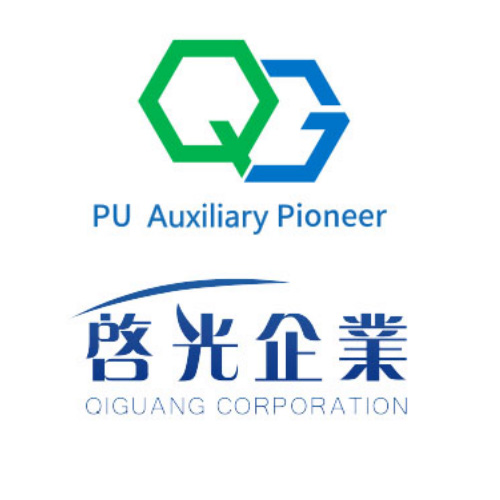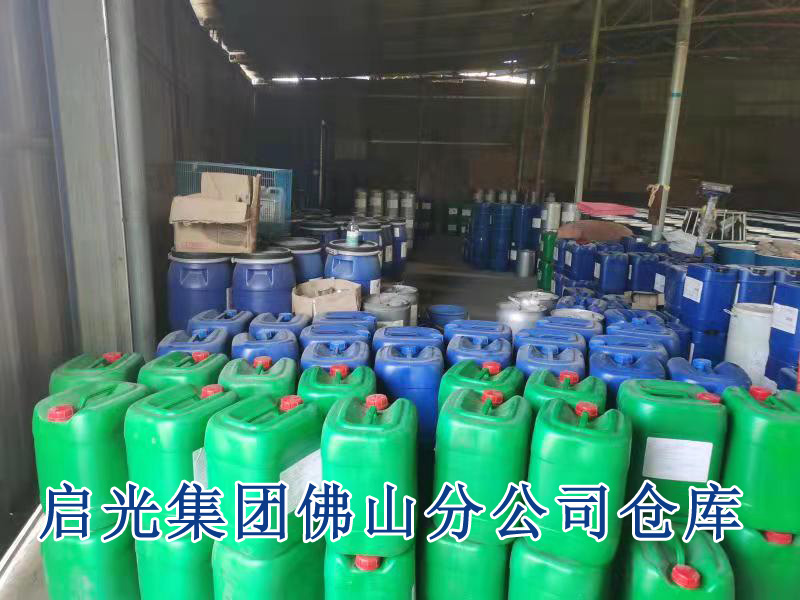Polyurethane is a polymer containing a urethane group (-NHCOO) in the polymer backbone. The full name is polyurethane, or polyurethane (PU) for short. Polyurethane is an emerging organic polymer material, known as the “fifth largest plastic”.
The main raw materials for synthesizing polyurethane are organic polyisocyanates and hydroxyl-terminated compounds. According to the different terminal hydroxyl compounds used, polyurethane can be divided into two types: polyester type and polyether type. Polyester type is polyurethane prepared from diisocyanate and hydroxyl-terminated polyester. Polyether type is polyurethane prepared from diisocyanate and hydroxyl-terminated polyether as raw materials.

Using different raw materials, polyurethane products with different properties can be prepared. The raw materials for synthetic polyurethane mainly include polyisocyanates, polyols, chain extenders and auxiliary materials.
Polyisocyanates
Substances containing two or more NCO groups in their structure are collectively called polyisocyanates. According to the number of NCO groups, they are generally divided into three categories: dibasic isocyanate, tribasic isocyanate and polymeric isocyanate. According to the molecular structure, it can be divided into aliphatic, alicyclic and aromatic isocyanates.
1. Toluene diisocyanate (TDI)
Toluene diisocyanate (TDI) is widely used. Toluene diisocyanate has two isomers, 2,4-position and 2,6-position, and is divided into three product specifications according to the content of the isomer:
A. TDI-100: Contains 100% 2,4-toluene diisocyanate;
B. TDI-80: contains 80% 2,4-toluene diisocyanate and 20% 2,6-toluene diisocyanate;
C. TDI-65: Contains 65% of 2,4-toluene diisocyanate and 35% of 2,6-toluene diisocyanate.
TDI is commonly used as a curing agent for polyurethane soft foam, potting elastomers, coatings and adhesives.
2. Diphenylmethane diisocyanate (MDI)
The main structure of diphenylmethane diisocyanate (MDI) includes three isomers: 4,4-MDI, 2,4-MDI and 2,2-MDI. Common products include pure MDI and polymerized MDI.
Pure MDI or MDI-100 is MDI containing more than 99% of 4,4-diphenylmethane diisocyanate. In the polyurethane industry, fiber (spandex) is mostly used, and it can also be used as a prepolymer (elastomer) for synthesis.
Polymer MDI (also known as polyurethane “black material”) is a mixture containing a certain proportion of pure MDI and polyphenyl polymethylene polyisocyanate. It is mostly used to make polyurethane rigid foam, which is widely used in refrigerators, freezers, refrigerated containers, building materials insulation, and automobile fields.
3. Hexamethylene diisocyanate (HDI)
Hexamethylene diisocyanate (HDI) is an aliphatic isocyanate. Because it does not contain benzene rings, it has good yellowing resistance and flexibility. HDI has low reactivity, high volatility, and high toxicity. Generally, HDI is reacted with water to make biuret diisocyanate. It is mainly used as a synthetic intermediate, and its trimers and condensates are commonly used curing agents.
4. Isophorone diisocyanate (IPDI)
Isophorone diisocyanate (IPDI) is an alicyclic isocyanate, and the product is a mixture containing 75% cis isomer and 25% trans isomer. Polyurethane resin made from IPDI has excellent light stability and chemical resistance. It is generally used to prepare high-end product intermediates, such as light-curing polyurethane resin, and its trimers and prepolymers can be used as coating curing agents.
In recent years, isocyanate products have been vigorously developed. The types of isocyanates have greatly increased and their properties have been improved. They have gradually transformed from basic raw materials to high-end raw materials.

Polyols
Polyols in polyurethane synthesis mainly include polyester polyols and polyether polyols. It constitutes the soft segment of polyurethane. The properties of polyurethane synthesized by the reaction of different polyols and isocyanates are also very different. It is generally believed that polyurethane reacted with polyester polyol has higher strength and hardness, while polyurethane reacted with polyether polyol has better flexibility and is not easy to Hydrolyzable.
1. Polyether polyol (PPG)
Polyether polyols contain ether bonds (-R-O-R-), an oligomer whose terminal group is an OH group. Polyurethane soft foam and hard foam have different requirements for the relative molecular weight and hydroxyl value of polyether.
Polyether polyols used for soft foam are generally long chain, low functionality, and have an average relative molecular weight of around 2,000 to 6,500. Polyether polyols used for hard foam (commonly known as “white materials”) usually have a relative molecular weight of 300~400 and a hydroxyl value of 350~600mgKOH/g.
2. Polyester polyol
The main chain of polyester polyol contains ester group (—COO—) or carbonate group (—OCOO—). It has strong bond polarity, large cohesive energy, and good bonding performance. It can improve the oil resistance and temperature resistance of polyurethane adhesives. , but the ester bond is easily hydrolyzed, which reduces the water resistance of polyurethane.
Aliphatic polyester polyols are mostly used in polyurethane inks, polyurethane elastomers, microporous polyurethane soles, polyurethane adhesives, castable polyurethane elastomers, PU leather resins, fabric coatings, etc.
Aromatic polyester polyols, because they contain benzene ring rigid groups in the molecule, can increase product strength, heat resistance, flame retardancy and other characteristics. Generally used in the manufacture of rigid polyurethane foam plastics, and also in non-foam polyurethane, such as polyurethane coatings, adhesives, elastomers, etc.
Polyurethane materials are an important application of polyols. By developing polyols with more properties, the performance and technology of polyurethane can be improved and a wider range of uses can be developed.
3. Auxiliary materials
Polyurethane raw materials usually also use chain extenders, catalysts, surfactants, cross-linking agents, foaming agents and other auxiliary materials.
Applications of polyurethane
Polyurethane is widely used in many fields of the national economy due to its excellent properties. Product applications include light industry, chemical industry, electronics, textiles, medical care, construction, building materials, automobiles, national defense, aerospace and aviation, etc. The application of polyurethane is mainly divided into three major areas: polyurethane soft foam, polyurethane rigid foam and polyurethane elastomer.
1. Polyurethane soft foam:
Cushion materials: such as seats, sofas, mattresses, etc., polyurethane soft foam is a very ideal cushion material, and cushion materials are also an application field with a large amount of soft foam;
Sound-absorbing materials: Open-cell polyurethane soft foam has good sound-absorbing and shock-absorbing functions and can be used as indoor sound insulation materials;
Textile composite materials: shoulder pads, bra sponges, cotton pads.
2. Polyurethane rigid foam:
Refrigeration and refrigeration equipment in home appliances and food industries: Polyurethane rigid foam is an ideal thermal insulation material for refrigeration and refrigeration equipment, and can achieve ideal insulation efficiency. It can be used as the thermal insulation layer for refrigerators, freezers, insulators, heaters and other electrical appliances.
Industrial equipment and pipeline insulation: Polyurethane rigid foam can be used as insulation material for storage tanks and pipelines, and is widely used in petroleum, chemical, natural gas and other industries.
Building insulation materials.
Automotive parts: PU hard foam can be used for car ceilings, interior parts and various auto parts, such as door panels, trunk lids, engine covers, etc.
Composite materials: High-density (density 300~700kg/m3) PU hard foam or glass fiber reinforced hard foam is a structural foam plastic, also known as imitation wood material. It can be used in profiles, plates, sporting goods, decorative materials, etc.
3. Polyurethane elastomer:
Polyurethane elastomers include: cast polyurethane elastomer (CPU), thermoplastic polyurethane elastomer (TPU) and mixed polyurethane elastomer (MPU). Polyurethane elastomers can be used in mechanical parts, rubber rollers, conveyor belts, sealing rings, rollers and tires, etc. It can also be used to make elastic fibers, synthetic leather resins, adhesives and coatings, etc.
In recent years, polyurethane materials have been vigorously developed. With the continuous innovation of raw materials and the gradual maturity and improvement of application technology, polyurethane is used more and more in industry and life, and it is becoming more and more important.